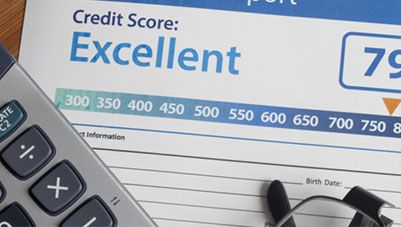You may be eligible for a pre-approved personal loan offer
Enter mobile and OTP | Check offer | No branch visit needed
Bajaj Finserv in your city
The process to choose the right loan does not mean choosing the lender that advertises to offer the personal loan at the lowest interest rate. Advertised or representative interest rate fails to show the actual cost of borrowing to the borrower. In fact, it is only the nominal interest rate and does not include other costs of the loan. Due to this reason, the final cost of a loan may come out to be much higher than the advertised interest rates. Therefore, knowing about annualised percentage rate (APR) and following the computation process in detail will help you to know the actual cost of borrowing beforehand.
With a Bajaj Finserv Personal Loan, there are no hidden costs. All the fees and charges are clearly mentioned on our website and in your loan documents. Check your loan offer in just 2 steps and apply online to get our loan.
Let us understand APR in detail and learn about how is it calculated.
What is the Annual Percentage Rate (APR)?
APR stands for Annual Percentage Rate (APR) and reflects the true yearly cost of borrowing. The APR full form in finance includes interest along with fees like processing charges and insurance, providing a clear picture of the APR loan cost for better borrower awareness.
Types of APR: Fixed vs. Variable
Understanding the different types of APR (Annual Percentage Rate) is essential for making informed borrowing decisions. The two primary types are Fixed APR and Variable APR.
Fixed APR:
- Remains constant throughout the loan tenure.
- Ensures predictable monthly payments, making budgeting easier.
- Ideal for long-term loans like mortgages where stability is preferred.
No surprise increases in interest even if market rates rise.
Variable APR:
- Fluctuates according to market conditions.
- May start lower than fixed rates, offering initial savings.
- Monthly payments can increase or decrease over time.
Carries the risk of higher costs if interest rates rise.
By understanding fixed and variable APRs, you can choose the loan type that best fits your financial goals and manage repayments effectively.
How does APR work and how to calculate it?
The Annual Percentage Rate (APR) is a crucial metric that represents the yearly cost of borrowing or the yearly return on an investment, expressed as a percentage. It includes not just the interest rate but also any associated fees or additional costs, making it a more comprehensive measure of the true cost of a loan.
Formula to calculate annual percentage rate
To calculate the APR, you can use the annual percentage rate formula:
APR = [(Total Interest + Total Fees) / Loan Amount] / Loan Term (in days) * 365 * 100
Example: If you borrow Rs. 1,000 and pay Rs. 100 in interest and fees over a year, the APR would be:
APR = [(Total Interest + Total Fees) / Loan Amount] / Loan Term (in days) × 365 × 100
Using the numbers above:
APR = [(100) / 1000] / 365 × 365 × 100 = 10%
It’s also important to consider the Effective Annual Rate (EAR), which accounts for compounding and gives a clearer picture of the actual repayment cost. Understanding APR and EAR helps borrowers compare loans effectively and plan their finances.
APR vs. annual percentage yield (APY)
When comparing financial products, it’s essential to understand the distinction between APR (Annual Percentage Rate) and APY (Annual Percentage Yield). Both metrics are expressed as percentages but serve different purposes.
APR represents the cost of borrowing money, including the rate of interest and any associated fees, providing borrowers with a clear view of the total cost over a year. For instance, if you take a loan of Rs. 100,000 with an APR of 10%, your annual cost will be Rs. 10,000, excluding any additional fees.
In contrast, APY takes compounding into account and reflects the total amount of interest earned on an investment or savings account over a year. For example, if you invest Rs. 100,000 at an APY of 6%, the interest earned at the end of the year would be approximately Rs. 6,000, assuming monthly compounding.
Understanding these differences can help you make more informed financial decisions, whether you’re borrowing or investing.
APR vs nominal interest rate vs. daily periodic rate
When navigating financial products, it’s important to understand the differences between APR, nominal interest rate, and daily periodic rate.
APR (Annual Percentage Rate) encompasses the total cost of borrowing, including both the interest rate and any associated fees, expressed as a percentage. For example, an APR of 12% means you’ll pay Rs. 12,000 annually on a loan of Rs. 100,000, excluding other fees.
The nominal interest rate, on the other hand, is the stated interest rate without considering compounding or additional costs. If a loan has a nominal interest rate of 10%, that’s the rate applied to your principal, but it doesn’t reflect the actual cost you’ll incur.
The daily periodic rate is derived from the nominal interest rate and is used to calculate interest on a daily basis. It’s calculated by dividing the nominal rate by 365. For instance, a nominal rate of 10% results in a daily periodic rate of approximately 0.027%.
Understanding these terms helps borrowers evaluate loans and manage their finances effectively.
How to lower APR for a personal loan
- Improve your credit score to qualify for a better APR loan rate.
- Compare multiple lenders to find the lowest APR percentage available.
- Choose a shorter loan tenure to reduce overall interest costs.
- Make a larger down payment or offer collateral to lower your APR loan rate.
- Avoid frequent loan applications to maintain a healthy credit profile.
Why is annual percentage rate (APR) disclosed?
The Annual Percentage Rate (APR) is disclosed to provide borrowers with a clear understanding of the total cost of borrowing over a year. By including not just the interest rate but also any associated fees, APR offers a more comprehensive view of what a loan will cost, helping consumers make informed decisions.
This disclosure is crucial for transparency, enabling borrowers to compare different loan options easily. For example, two loans may have the same nominal interest rate, but differing APRs can reveal hidden costs or better overall value. Additionally, the requirement to disclose APR helps protect consumers from misleading lending practices, ensuring they are aware of the financial implications before committing to a loan. Ultimately, the disclosure of APR empowers borrowers to make choices that align with their financial goals and budgetary constraints.
What is a good APR?
A good APR varies based on the type of loan and prevailing market conditions. Generally, for personal loans, a good APR might range from 6% to 10%, while for credit cards, anything below 15% is often considered favorable. For mortgages, a good APR can be significantly lower, often between 3% and 5%, depending on creditworthiness and the overall economic climate.
It's important to note that individual financial circumstances play a crucial role in determining what constitutes a "good" APR. Factors such as credit score, income, and debt-to-income ratio can influence the rates offered to a borrower. Therefore, borrowers should shop around and compare APRs from different lenders to find the most advantageous terms. Additionally, understanding the terms of the loan and potential fees can help in assessing whether the APR is truly competitive, making it essential to read the fine print before making a decision.
Why is it important to know about APR?
APR is important as you will be repaying the borrowed sum at this rate. APR will help you to stay away from paying high EMI payments and also assists you in comparing multiple personal loan offers.
Knowing the APR beforehand could also help you in planning your monthly budget appropriately. You may check what EMI you will need to pay for your loan with a personal loan EMI calculator.
Knowing the APR will help you borrow funds wisely, compare among various personal loan offers, and decrease your cost of borrowing. When scouting for offerings in the market, this ensures a proper comparison, based on the total cost.
Bajaj Finserv Personal Loan stands out among the others as it has the most competitive APR and comes with several value-added loan benefits too.
Disadvantages of Annual Percentage Rate (APR):
- APR may exclude certain costs like closing fees or extra charges, giving an incomplete picture of the total loan expense.
- It does not account for compounding interest, which can increase the actual cost if interest compounds frequently.
- Comparing APRs across lenders can be difficult since different fees may or may not be included in their calculations.
- The complexity and variations in APR calculations can confuse borrowers, making it important to carefully review all loan terms and fine print.
Key offerings: 3 loan types
Personal loan interest rate and applicable charges
Type of fee |
Applicable charges |
Rate of interest per annum |
10% to 31% p.a. |
Processing fees |
Up to 3.93% of the loan amount (inclusive of applicable taxes). |
Flexi Facility Charge |
Term Loan – Not applicable Flexi Loans –Up To Rs 1,999 To Up To Rs 18,999/- (Inclusive Of Applicable Taxes) |
Bounce charges |
Rs. 700 to Rs. 1,200/- per bounce “Bounce Charges” shall mean charges levied on each instance in the event of: (i) dishonour of any payment instrument irrespective of whether the customer subsequently makes the payment through an alternate mode or channel on the same day; and/or (ii) non-payment of instalment(s) on their respective due dates where any payment instrument is not registered/furnished; and/or (iii) rejection or failure of mandate registration by the customer’s bank. |
Part-prepayment charges |
Full Pre-payment: |
Penal charge |
Delay in payment of instalment(s) shall attract Penal Charge at the rate of up to 36% per annum per instalment from the respective due date until the date of receipt of the full instalment(s) amount. |
Stamp duty (as per respective state) |
Payable as per state laws and deducted upfront from loan amount. |
Annual maintenance charges |
Term Loan: Not applicable Flexi Term (Dropline) Loan: Up to 0.30% (Inclusive of applicable taxes) of the Dropline limit (as per the repayment schedule) on the date of levy of such charges.
Up to 0.30% (Inclusive Of Applicable Taxes) Of The Dropline Limit During Initial Tenure. Up to 0.30% (Inclusive Of Applicable Taxes) Of Dropline Limit During Subsequent Tenure |
Related articles
Disclaimer
Bajaj Finance Limited has the sole and absolute discretion, without assigning any reason to accept or reject any application. Terms and conditions apply*.
For customer support, call Personal Loan IVR: 7757 000 000









 Personal Loan
Personal Loan Check Eligibility
Check Eligibility Salaried Personal Loan
Salaried Personal Loan EMI Calculator
EMI Calculator Account Aggregator
Account Aggregator Credit Pulse Report
Credit Pulse Report
 Deals starting @99
Deals starting @99 Min. 50% off
Min. 50% off
 Bajaj Pay
Bajaj Pay Wallet to Bank
Wallet to Bank
 Easy EMI Loan
Easy EMI Loan Savings Offer
Savings Offer Smartphones
Smartphones Led TVs
Led TVs Washing Machines
Washing Machines Laptops
Laptops Refrigerators
Refrigerators Air Conditioner
Air Conditioner Air Coolers
Air Coolers
 Loan Against Shares
Loan Against Shares Loan Against Mutual Funds
Loan Against Mutual Funds Loan Against Insurance Policy
Loan Against Insurance Policy ESOP Financing
ESOP Financing Easy EMI Loan
Easy EMI Loan Two-wheeler Loan
Two-wheeler Loan Loan for Lawyer
Loan for Lawyer Industrial Equipment Finance
Industrial Equipment Finance Industrial Equipment Balance Transfer
Industrial Equipment Balance Transfer Industrial Equipment Refinance
Industrial Equipment Refinance Personal Loan Branch Locator
Personal Loan Branch Locator Used Tractor Loan
Used Tractor Loan Loan Against Tractor
Loan Against Tractor Tractor Loan Balance Transfer
Tractor Loan Balance Transfer Flexi
Flexi View All
View All
 Two-wheeler Loan
Two-wheeler Loan Bike
Bike Scooter
Scooter Electric Vehicle
Electric Vehicle Best Sellers
Best Sellers Popular Brands
Popular Brands

 Trading Account
Trading Account Open Demat Account
Open Demat Account Margin Trading Financing
Margin Trading Financing Share Market
Share Market Invest in IPO
Invest in IPO All stocks
All stocks Top gainers
Top gainers Top losers
Top losers 52 week high
52 week high 52 week low
52 week low Loan against shares
Loan against shares
 Home Loan
Home Loan Transfer your existing Home loan
Transfer your existing Home loan Loan against Property
Loan against Property Home Loan for Salaried
Home Loan for Salaried Home loan for self employed
Home loan for self employed Loan Against Property Balance Transfer
Loan Against Property Balance Transfer Home Loan EMI Calculator
Home Loan EMI Calculator Home Loan eligibility calculator
Home Loan eligibility calculator Home Loan balance transfer
Home Loan balance transfer View All
View All
 Term Life Insurance
Term Life Insurance ULIP Plan
ULIP Plan Savings Plan
Savings Plan Family Insurance
Family Insurance Senior Citizen Health Insurance
Senior Citizen Health Insurance Critical Illness Insurance
Critical Illness Insurance Child Health Insurance
Child Health Insurance Pregnancy and Maternity Health Insurance
Pregnancy and Maternity Health Insurance Individual Health Insurance
Individual Health Insurance Low Income Health Insurance
Low Income Health Insurance Student Health Insurance
Student Health Insurance Group Health Insurance
Group Health Insurance Retirement Plans
Retirement Plans Child Plans
Child Plans Investment Plans
Investment Plans
 Business Loan
Business Loan Secured Business Loan
Secured Business Loan Loan against property
Loan against property Loans against property balance transfer
Loans against property balance transfer Loan against shares
Loan against shares Home Loan
Home Loan Loans against mutual funds
Loans against mutual funds Loan against bonds
Loan against bonds Loan against insurance policy
Loan against insurance policy
 Apply for Gold Loan
Apply for Gold Loan Transfer your Gold Loan with Us
Transfer your Gold Loan with Us Gold Loan Branch Locator
Gold Loan Branch Locator
 ULIP Plan
ULIP Plan Savings Plan
Savings Plan Retirement Plans
Retirement Plans Child Plans
Child Plans Free Demat Account
Free Demat Account Invest in Stocks
Invest in Stocks Invest in IPO
Invest in IPO Margin Trading Facility
Margin Trading Facility Fixed Deposit Branch Locator
Fixed Deposit Branch Locator
 Check your Credit Score
Check your Credit Score
 New Car Loan
New Car Loan Used Car Loan
Used Car Loan Loan Against Car
Loan Against Car Car Loan Balance Transfer and Top-up
Car Loan Balance Transfer and Top-up My Garage
My Garage
 Get Bajaj Prime
Get Bajaj Prime
 Mobiles on EMI
Mobiles on EMI Electronics on EMI Offer
Electronics on EMI Offer  Iphone on EMI
Iphone on EMI LED TV on EMI
LED TV on EMI Refrigerator on EMI
Refrigerator on EMI Laptop on EMI
Laptop on EMI Kitchen appliances on EMI
Kitchen appliances on EMI Washing machines
Washing machines
 Personal Loan EMI Calculator
Personal Loan EMI Calculator Personal Loan Eligibility Calculator
Personal Loan Eligibility Calculator Home Loan EMI Calculator
Home Loan EMI Calculator Home Loan Eligibility Calculator
Home Loan Eligibility Calculator Good & Service Tax (GST) Calculator
Good & Service Tax (GST) Calculator Flexi Day Wise Interest Calculator
Flexi Day Wise Interest Calculator Flexi Transaction Calculator
Flexi Transaction Calculator Secured Business Loan Eligibility Calculator
Secured Business Loan Eligibility Calculator Fixed Deposits Interest Calculator
Fixed Deposits Interest Calculator Two wheeler Loan EMI Calculator
Two wheeler Loan EMI Calculator New Car Loan EMI Calculator
New Car Loan EMI Calculator Used Car Loan EMI Calculator
Used Car Loan EMI Calculator All Calculator
All Calculator Used Tractor Loan EMI Calculator
Used Tractor Loan EMI Calculator
 Hot Deals
Hot Deals Clearance Sale
Clearance Sale Kitchen Appliances
Kitchen Appliances Tyres
Tyres Camera & Accessories
Camera & Accessories Mattresses
Mattresses Furniture
Furniture Watches
Watches Music & Audio
Music & Audio Cycles
Cycles Mixer & Grinder
Mixer & Grinder Luggage & Travel
Luggage & Travel Fitness Equipment
Fitness Equipment Fans
Fans
 Personal Loan for Doctors
Personal Loan for Doctors Business loan for Doctors
Business loan for Doctors Home Loan
Home Loan Secured Business Loan
Secured Business Loan Loan against property
Loan against property Secured Business Loan Balance Transfer
Secured Business Loan Balance Transfer Loan against share
Loan against share Gold Loan
Gold Loan Medical Equipment Finance
Medical Equipment Finance
 Smart Hub
Smart Hub ITR Service
ITR Service Digi Sarkar
Digi Sarkar
 Savings Offer
Savings Offer Easy EMI
Easy EMI Offer World
Offer World 1 EMI OFF
1 EMI OFF New Launches
New Launches Zero Down Payment
Zero Down Payment Clearance Sale
Clearance Sale Bajaj Mall Sale
Bajaj Mall Sale
 Mobiles under ₹20,000
Mobiles under ₹20,000 Mobiles under ₹25,000
Mobiles under ₹25,000 Mobiles under ₹30,000
Mobiles under ₹30,000 Mobiles under ₹35,000
Mobiles under ₹35,000 Mobiles under ₹40,000
Mobiles under ₹40,000 Mobiles under ₹50,000
Mobiles under ₹50,000
 Articles
Articles
 Overdue Payments
Overdue Payments Other Payments
Other Payments
 Document Center
Document Center Bank details & Documents
Bank details & Documents Tax Invoice Certificate
Tax Invoice Certificate
 Do Not Call Service
Do Not Call Service
 Hamara Mall Orders
Hamara Mall Orders

 Fixed Deposit (IFA) Partner
Fixed Deposit (IFA) Partner Loan (DSA) Partner
Loan (DSA) Partner Debt Management Partner
Debt Management Partner EMI Network Partner
EMI Network Partner Became a Merchant
Became a Merchant Partner Sign-in
Partner Sign-in
 Trade directly with your Demat A/c
Trade directly with your Demat A/c ITR
ITR My Garage
My Garage
 Live Videos - Beta
Live Videos - Beta
 Savings Offer
Savings Offer Smartphones
Smartphones LED TVs
LED TVs Washing Machines
Washing Machines Laptops
Laptops Refrigerators
Refrigerators Air Conditioners
Air Conditioners Air Coolers
Air Coolers Water Purifiers
Water Purifiers Tablets
Tablets Kitchen Appliances
Kitchen Appliances Mattresses
Mattresses Furniture
Furniture Music and Audio
Music and Audio Cameras & Accessories
Cameras & Accessories Cycle
Cycle Watches
Watches Tyres
Tyres Luggage & Travel
Luggage & Travel Fitness Equipment
Fitness Equipment Tractor
Tractor Easy EMI Loan
Easy EMI Loan
 vivo Mobiles
vivo Mobiles OPPO Mobiles
OPPO Mobiles Xiaomi Mobiles
Xiaomi Mobiles Sony LED TVs
Sony LED TVs Samsung LED TVs
Samsung LED TVs LG LED TVs
LG LED TVs Haier LED TVs
Haier LED TVs Godrej Refrigerators
Godrej Refrigerators Voltas Washing Machines
Voltas Washing Machines
 New Tractor Loan
New Tractor Loan Used Tractor Loan
Used Tractor Loan Loan Against Tractor
Loan Against Tractor Tractor Loan Balance Transfer
Tractor Loan Balance Transfer
 New Car Loan
New Car Loan New Cars Under ₹10 Lakh
New Cars Under ₹10 Lakh New Cars – ₹10–₹15 Lakh
New Cars – ₹10–₹15 Lakh New Cars – ₹15–₹20 Lakh
New Cars – ₹15–₹20 Lakh New Cars – ₹20–₹25 Lakh
New Cars – ₹20–₹25 Lakh New Car Brands
New Car Brands Petrol – New Cars
Petrol – New Cars Diesel – New Cars
Diesel – New Cars Electric – New Cars
Electric – New Cars CNG – New Cars
CNG – New Cars Hybrid – New Cars
Hybrid – New Cars









